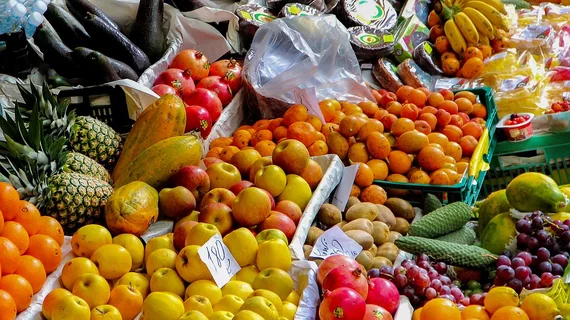Researchers predicted 12,400 additional deaths from cardiovascular disease (CVD) could occur in England between 2021 and 2030 if the United Kingdom severs preferential trading agreements with the European Union (EU) and prices of fruits and vegetables are impacted.
The U.K. already performs poorly in terms of fruit and vegetable consumption, noted lead author Paraskevi Seferidi and colleagues, with one study estimating only 27 percent of adults 19 to 64 years old meet the recommended daily intake. Projected price increases with different trade arrangements post-Brexit could further lower this proportion.
“In 2017, 84% of fruits and 43% of vegetables in the U.K. were imported,” Seferidi, a PhD student with the School of Public Health at Imperial College London, and co-authors wrote in BMJ Open. “Thus, changes to the U.K. trade regime are likely to affect prices of F&V by increasing costs of trade. With price being one of the main determinants of consumer behavior in the U.K., Brexit could affect F&V intake with significant implications for U.K. diets.”
Seferidi et al. used national survey data on fruit and vegetable intake, estimates of U.K-specific price elasticities and estimates on the relationship between fruit and vegetable consumption and CVD to model the impact of four different post-Brexit trade scenarios beginning in 2021:
- A free trading agreement with the EU and half of its current non-EU tariff-free fruit and vegetable importers.
- A zero-tariff free trading agreement with EU countries only, with no preferential access to non-EU importers.
- No-deal Brexit, in which the U.K. falls into a default position with the World Trade Organization and has no preferential trading arrangements with any importers.
- A liberalized trade regime in which there are no specific trade arrangements but also no import tariffs on fruits and vegetables. “This is an extreme case scenario that shows the impact of non-tariff trade barriers on F&V trade,” the authors wrote.
For all the scenarios, the researchers assumed there would be a 5 percent increase in transaction costs due to a rise in post-Brexit border controls. Another 4.5 percent increase was tacked on for additional checks to meet technical regulations when preferential trade arrangements weren’t in place.
The no-deal Brexit scenario was deemed most harmful, resulting in intake reductions of 11.4 percent for fruits and 9.1 percent for vegetables. This would be expected to contribute to a 1.7 percent increase in CVD mortality—or 12,400 extra deaths from CVD in England from 2021 to 2030, Seferidi et al. reported.
Establishing a free trade agreement with EU countries only would lower that excess death total to 5,740, while also keeping half of agreements with non-EU importers would further drop that figure to 4,110.
“Our analysis suggests that all modelled Brexit trade policy scenarios could increase price and reduce intake of F&V,” the authors wrote. “The U.K. government needs to develop a comprehensive policy response against this potential detrimental impact by aligning domestic nutrition and agricultural policies and future trade policy with public health aims. At the same time, the wider implications of Brexit to the U.K. food system should also be considered.”
The authors noted Brexit could also impact the prices and intake of other food groups related to CVD, but their study only analyzed the estimated effects of these changes for fruits and vegetables. They said the trade arrangements they modeled stemmed from government and expert consensus, but acknowledged other scenarios could arise with different implications for food pricing and public health.

